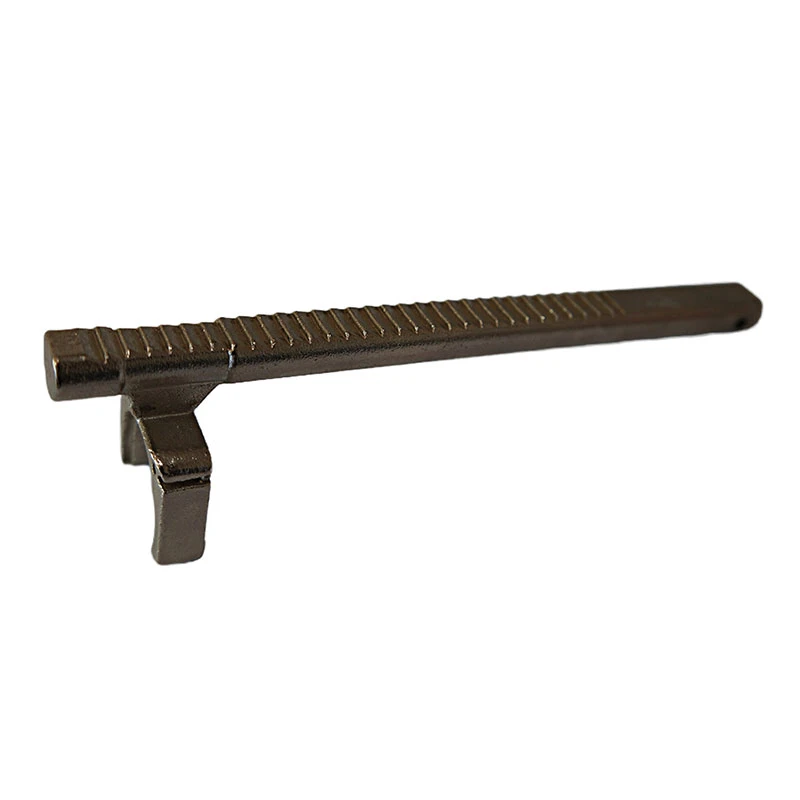High-Quality Aluminium Sand Casting Solutions for Diverse Industrial Applications
Aluminium Sand Casting Products A Comprehensive Overview
Aluminium sand casting is a vital manufacturing process that leverages the unique properties of aluminium to create a wide array of products. This method is widely employed across various industries due to its versatility, cost-effectiveness, and ability to produce complex shapes. In this article, we’ll explore the advantages of aluminium sand casting, the process involved, its applications, and the future of this manufacturing technique.
Understanding Aluminium Sand Casting
Aluminium sand casting involves creating a mould from sand and then pouring molten aluminium into this mould to produce the desired part. The process starts with the creation of a pattern, typically made from metal or plastic, which represents the final product. This pattern is then used to form a mould in sand, often treated with binders to enhance its strength and reusability.
Once the mould is prepared, molten aluminium is poured into it. The aluminium is heated to high temperatures (around 660°C or 1220°F) until it becomes liquid. It is then allowed to cool and solidify, taking the shape of the mould. Once cooled, the sand mould is broken apart to reveal the cast aluminium part.
Advantages of Aluminium Sand Casting
One of the most significant benefits of aluminium sand casting is its cost-effectiveness, especially for small to medium production runs. The sand mould can be reused multiple times, which minimizes material waste. Additionally, sand casting allows for greater design flexibility compared to other casting methods, making it easier to create intricate and complex geometries.
Aluminium, in itself, is lightweight yet possesses excellent strength-to-weight ratios, making it a suitable choice for many applications. The ability to incorporate various alloys into the casting process further enhances the mechanical properties of the final products. For instance, aluminium alloys can be tailored to achieve a desired balance of strength, corrosion resistance, and machinability.
Moreover, aluminium sand casting provides excellent surface finish and dimensional accuracy, making it an ideal option for intricate components that require precision.
aluminium sand casting products

Applications of Aluminium Sand Casting
The versatility of aluminium sand casting means it finds applications across a broad range of industries. In the automotive sector, for example, it is used to manufacture engine blocks, transmission cases, and various chassis components, helping reduce the overall weight of vehicles and improving fuel efficiency.
In the aerospace industry, aluminium sand casting is employed to produce lightweight yet strong components that can withstand high stress and extreme conditions. This includes parts for aircraft engines, fuselage structures, and landing gear systems.
The medical and healthcare industries also benefit from aluminium sand casting, particularly in the production of durable and corrosion-resistant medical equipment and devices. Additionally, consumer products such as cookware, decorative items, and furniture fixtures often utilize aluminium sand casting for their lightweight and aesthetic qualities.
The Future of Aluminium Sand Casting
As industries continue to evolve, so does the technology used in aluminium sand casting. Advancements in materials science and engineering are enhancing the capabilities and efficiencies of the sand casting process. The integration of computer-aided design (CAD) and computer-aided manufacturing (CAM) technologies streamlines the design process, allowing for faster prototyping and more accurate casting.
Furthermore, there is a growing emphasis on sustainability within the manufacturing sector. Aluminium sand casting is eco-friendly, as the sand used is abundant, recyclable, and can be reused multiple times. The industry is also exploring ways to minimize energy consumption during the casting process and reduce emissions, aligning with global sustainability goals.
In conclusion, aluminium sand casting products play a crucial role in various industries due to their unique properties and production advantages. The combination of aluminium's lightweight characteristics, strength, and the flexibility of the sand casting method allows for the development of complex and precise components. As technology progresses, we can expect aluminium sand casting to further enhance its contributions to the manufacturing landscape, driving innovation and sustainability in the years to come. Whether in automotive, aerospace, or consumer goods, aluminium sand casting continues to be a preferred choice due to its versatility and cost-effectiveness.
-
Pros & Cons of Sand Casting: Products & ApplicationsNewsAug.19,2025
-
Advanced Crawler Drilling Rig for Confined Spaces-Baoding Hairun Machinery And Equipment Trading Co., Ltd.NewsAug.18,2025
-
Crawler Drilling Rig- Baoding Hairun Machinery And Equipment Trading Co., Ltd.|Pneumatic Power,Frame-Supported DesignNewsAug.18,2025
-
Precision OEM Valve Body Castings for Superior PerformanceNewsAug.18,2025
-
Crawler Mounted Drill Rig - Baoding Hairun Machinery | Underground Drilling SolutionsNewsAug.18,2025
-
Crawler Mounted Drill Rig - Baoding Hairun | Pneumatic Safety, Mining EfficiencyNewsAug.17,2025















